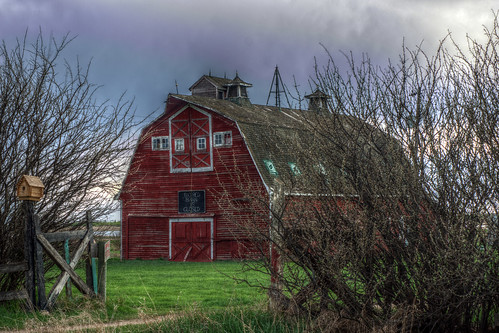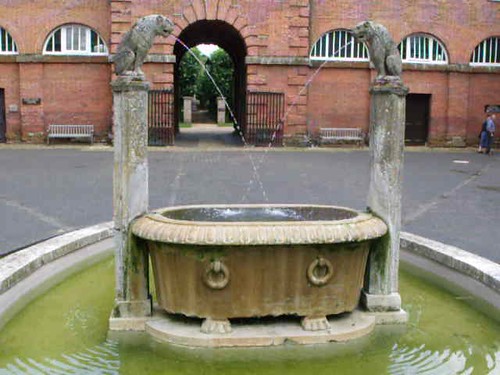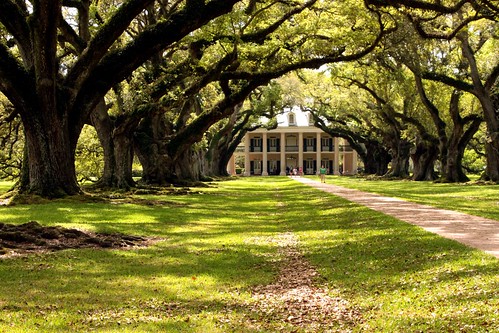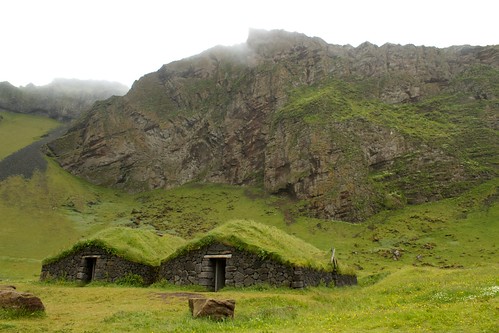Just to give you a bit of a preview, Building Types we are investigating:
2. #006 Agricultural (today!)
3. #007 Shops, Mews & Restaurants (next week)
4. #008 Public Buildings
5. #009 Commercial Buildings
6. #010 Industrial Buildings
7. #011 Sports Buildings, Theaters & Churches
 |
| Big Red Barn Image courtesy of Bruce Guenter via Flickr |
Agricultural Buildings
Quick, what's the first thing you thought of? A red barn, right? Yeah, me too. And there's a few reasons why: they're bright red, and they're the most prominent building on a farm. It's the number one advertisement a farmer has for his prosperity.Building Groups, Barns, Silos & Stables
 |
| Houghton Hall - Stable Square Image courtesy of ell brown via Flickr |
1. Maybe you start with a BARN: invite people for miles around to your barn raising so it goes up quickly and you have some shelter for the night. You can sleep in the loft while you build a one-room or two-room house, and your animals will be safe from predators on the dirt floor.
2. Next will likely be a small starter HOME which you can add to later if you need more room. Be sure to plant some grass to deter wind erosion if necessary. Surround your buildings with some nice trees that will protect you from the wind out on the countryside. Check out these haunting farmhouse photos from the midwest.
 |
| Wallonie Farm courtyard, Belgium Image courtesy of Simon Blackley via Flickr |
Proximity
You would likely build all of these in the protected area near or even connected to your original barn and home.| Viljandi Castle in Medieval times A. Tuulse: "Die Burgen in Estland und Lettland" Image courtesy of Wikimedia Commons. |
Close proximity means that predators, thieves, sick animals, or fires would wake you up before too much damage was done. Your buildings would all have equal access to amenities like a water well, and wind protection. And together they would likely form a secure courtyard where children can play and chickens can peck.
Take this example to its extreme and you have a castle community within a gate.
Another option is to plan the courtyard from the beginning like a hacienda. Notice the tendency to turn water wells into fountains in a hacienda courtyard.
Farm Houses & Plantations
Traditionally, farmers have been more interested in |
| Oak Alley Plantation, Vacherie, Louisiana I grew up a half hour from here; I've never been inside. Image courtesy of Prayitno via Flickr |
The exception to this would be plantations, where the colonial owner/overseer lived in a nice home while the actual farming was generally done by a "lower" class of people, often natives or imported slaves. The crops were grown on a large scale for sale on the commercial market and not generally for local use.
Do you wanna go to Norway?
 |
| barn at the Norwegian Folk Museum Image courtesy of shannonkringen via Flickr |
Norwegian Folk Museum in Oslo. I wanna go so badly, but I don't think my little ones will prefer it over Disney. :(
Have any of you ever been to Norway? This museum is an open air collection of vernacular buildings collected (relocated from their original location) into an architectural exhibit.
Click thru for the Norwegian Farmstead exhibit. By the way, did you notice all the cool Norwegian architecture and textiles in Frozen?
Becher Photography & Agri-Industry
Agriculture had become industrialized along with everything else during the Industrial Revolution and agricultural buildings were fair game for the Bechers' amazing project as well.
A group of their water tower pictures can be viewed at the Metropolitan Museum of Art.
As an aside, they were very interested in the question of typology (building types), just like us! They usually grouped the images together by type onto a large poster.
Homework
Homework #006 Visit an agricultural building
 |
| Greenhouse at the National Botanic Garden of Belgium at Meise Another beautiful image by Simon Blackley via Flickr |
With each new building type we talk about, your assignment will be to visit an example and report back on your experience. The building types we will be looking at are listed at the top of the post.
Feel free to do them out of order if you happen to be near something cool... and be sure to let me know if there's a building type that I left out that you are super interested in.
Included in agricultural building types are ranches (not to be confused with "ranch" style houses), vineyard buildings, and garden buildings like greenhouses.
This Week's Q & A #006
Gabriel: "Were the people who built the Lord of the Rings movie set "Bag End" inspired by a certain style of architecture?"
Ally: While I can't comment on someone else's inspiration, I can definitely point to some traditional examples of homes that may have influenced artwork for the Lord of the Rings books and recent films.
Contemporary Illustrations
If you recall, Bag End is described like this:
“In a hole in the ground there lived a hobbit. Not a nasty, dirty, wet hole, filled with the ends of worms and an oozy smell, nor yet a dry, bare, sandy hole with nothing in it to sit down on or to eat: it was a hobbit-hole, and that means comfort.” ― J.R.R. Tolkien, The Hobbit
When I read the book as a child, I pictured a hobbit hole with an entrance like a mole hill and a hidden home beneath. Most of the artwork surrounding the stories have included a round, vertical entrance door which only references the idea of a hole. Check out some of the images here. And Tolkien's own illustration here.
You can tell that the movie set, while super cool, was heavily indebted to earlier artwork for source material.
Turf Houses & Green Roofs
Turf houses -- traditional houses that are built partially into the ground with sod/grass for insulation & roofing -- are not uncommon in Iceland, Scotland and parts of Scandinavia. (click links for pics)
 |
| Turf Houses, Iceland Image courtesy of brian.gratwicke via Flickr |
Being partially UNDERGROUND, they benefit from the ground temperatures (typically 55deg year-round) during extreme temperatures.
Modern buildings built partially underground are often called earth sheltered homes or earthships (though the second term is a proprietary label).
The modern version of a turf roof is called a "green roof," and is highly engineered to deter infiltration of dirt and/or moisture through the turf. Green roofs can be very helpful in urban areas by reducing heat islands effect, cleaning polluted air, and alleviating storm drain loads.
| Shire house repurposed as a sheep house from inhabitat |
*This is the most helpful in places where it is hot during the day and cool at night, like the desert.
I've been gathering some images of vernacular buildings on Pinterest; many of them have a relationship aesthetically to Bag End, and they will have predated the Hobbit, which was published in 1937. (The Lord of the Rings trilogy was written later, mostly during World War II.)
Bag End Tributes
Many people are inspired by Bag End!Check out this small scale model of the movie version of Bag End.
And of course, Lego has a Bag End set. My six year old LOVES it (but occasionally has to fight me for it).
Cheers,
ally
So traditional adobe houses would be examples of thermal mass, right?
ReplyDeleteexactly!
ReplyDelete